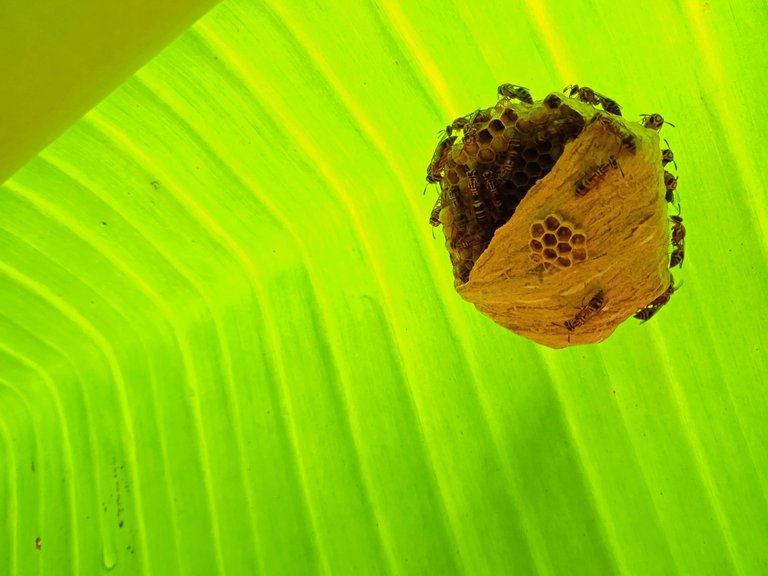
Saludos y ¡Felices fiestas!, hermosa comunidad Amazing Nature, espero que todos estén pasando estos días en paz y armonía. Hoy he vuelto para compartir con ustedes las imágenes que tomé semanas atrás en mi solar, de una colmena de pequeñas avispas, que según me comentó @agneagro en un post previo que hice sobre [ESP/ENGL] Polinizadores en el solar, pertenecen a la familia Vespidae y al género Protopolybia. Pueden ver detalles muy interesantes acerca de este insecto, en el estupendo y completo post que @agneabro hizo posteriormente, el cual tituló (Esp/Eng) Avispas sociales del género Protopolybia // Social wasps of the genus Protopolybia
Greetings and Happy Holidays! Beautiful Amazing Nature community, I hope everyone is spending these days in peace and harmony. Today I am back to share with you the images that I took weeks ago in my backyard, of a hive of small wasps, which @agneagro told me in a previous post I made about [ESP/ENGL] Polinizadores en el solar, they belong to the family Vespidae and the genus Protopolybia. You can see very interesting details about this insect, in the wonderful and complete post that @agneabro made later, which he titled (Esp/Eng) Avispas sociales del género Protopolybia // Social wasps of the genus Protopolybia

In the specific case of these small wasps (Protopolybia), I have repeatedly seen that they make hives on the underside of the leaves of Musaceae, especially when the leaf is aging, a behavior that surprises me a lot, since eventually that leaf will deteriorate and dry out, putting the integrity of the hive at risk.
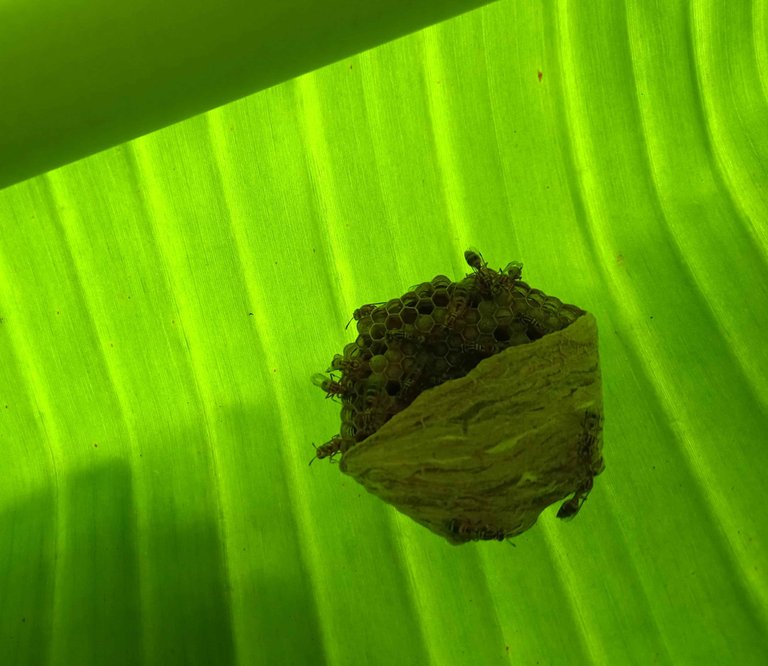
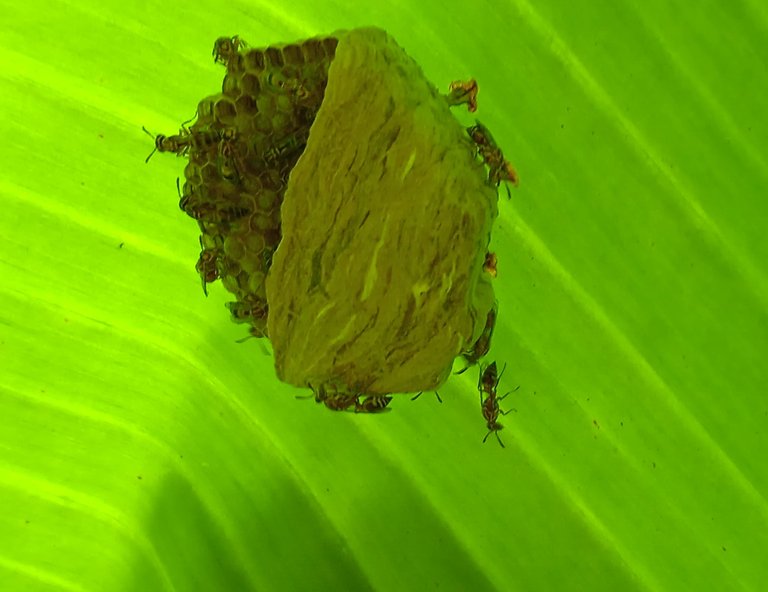

Upon observing in more detail, I could notice that the structure of the hive is attached to the leaf, by a type of anchors, which can be seen in these photos. Unfortunately one of the photos is very blurry.
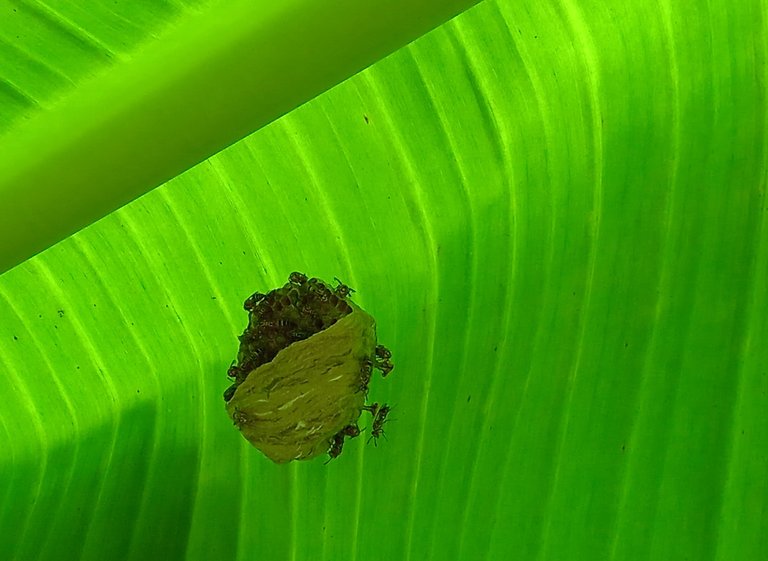
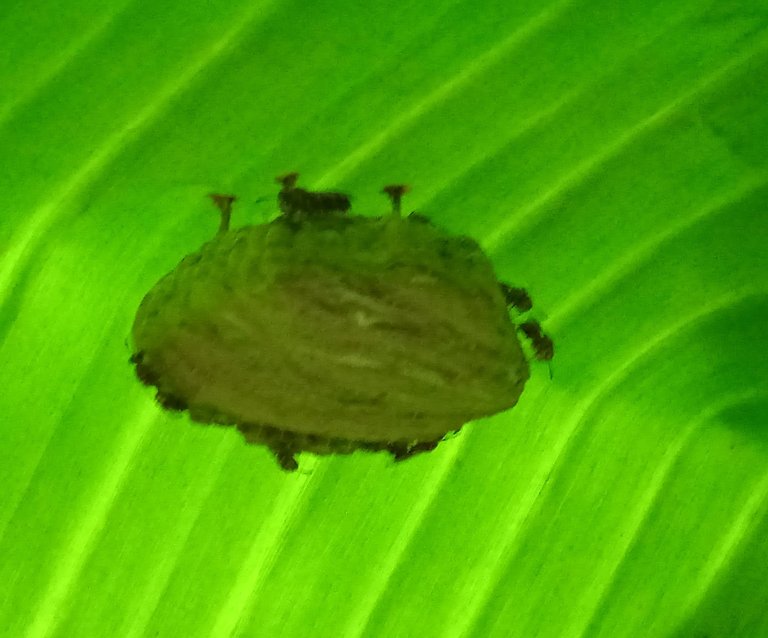

The construction activity of this hive is frenetic, and although the number of individuals is relatively small (I estimate about 80-100 wasps), they are all doing some work, which I cannot define, I only observed that they were there, from one place to another, such as ventilating, cleaning, and fixing the structure. I was struck by the perfection of the cells, and how careful these insects were when being inside the hive.
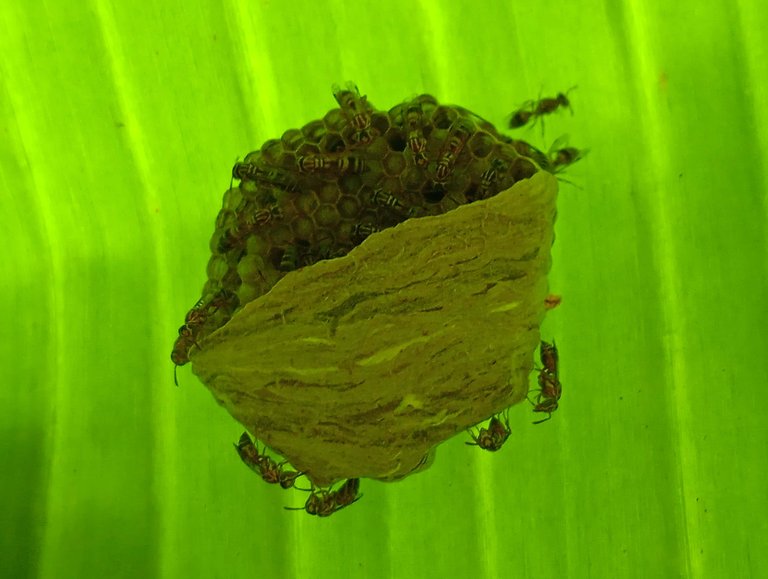
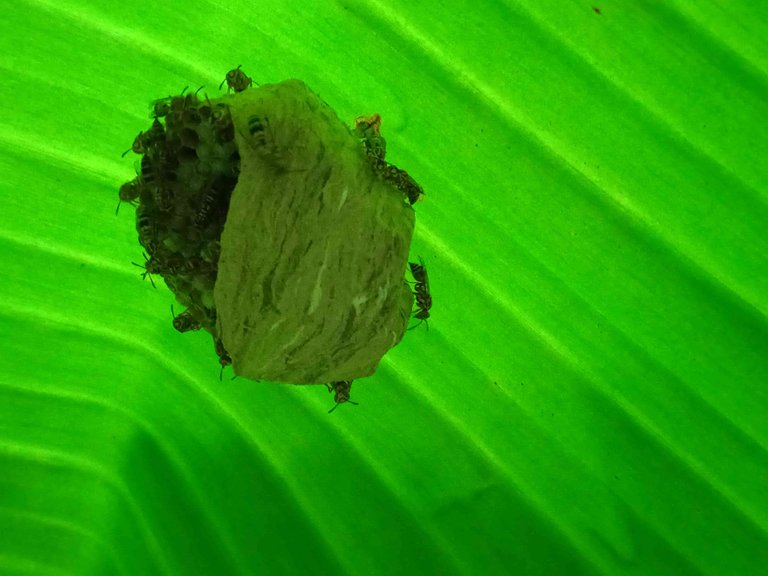


What I really don't understand is how ephemeral this hive is, since it is not like those of other bees, which build in firmer and more sheltered places, but as I already indicated, on the underside of the musaceae leaves. In any case, they are beautiful and curious insects.
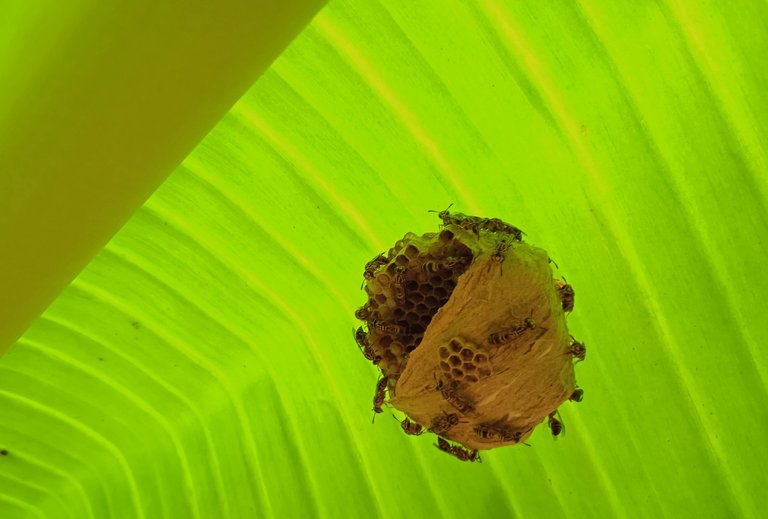

Here I end my post today, in which I wanted to show you in more detail, the hive of some small wasps, which until now have been very friendly to me. Greetings to all, and remember that insects are very important for life on our planet, especially pollinators, such as those that correspond to the genus Protopolybia

Otros posts en los que hablo de las abejas / Other posts where I talk about bees

Todas las fotos de este post son de mi autoría y fueron tomadas con mi teléfono Xiomi REDMI 8 A // These photos are my own, and were taken with a Xiomi REDMI 8 A phone
Los divisores son cortesía de @eve66 quien comparte bellos diseños que embellecen el maquetado de nuestras publicaciones. // The dividers used are courtesy of @eve66 who shares beautiful designs that embellish the layout of our post.
En caso de que se requiera utilizar el contenido o las imágenes de este post y de mis otras publicaciones, agradecería que se hiciera referencia a mi autoría (Fabiola Martínez) y se citara el enlace correspondiente. Gracias. // In case it is required to use the content or images of this post and of my other publications, I would appreciate if you could refer to my authorship (Fabiola Martínez) and cite the corresponding link. Thanks.




Delegations welcome!



